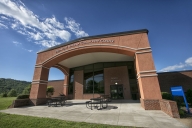You have /5 articles left.
Sign up for a free account or log in.
Seven months ago free community college was the higher ed policy idea with the most buzz, with everyone from President Obama to families with no college experience talking about the appeal of eliminating the cost of tuition.
Yet movement on two years of free tuition has only happened at the state and institutional level. The national conversation -- particularly in the Democratic presidential race -- has shifted instead to the debt-free movement as concerns over the student loan crisis at four-year public institutions has grown. The bulk of this conversation has shifted from getting more people into higher education, like through community colleges, to the best way to help those coming out of college with as little debt as possible.
But the shift doesn't seem to bother advocates of two-year free community college initiatives, who don't see either idea as divorced from the other.
“I don't think it's as clear-cut a distinction,” said Morley Winograd, president and chief executive officer for the Campaign for Free College Tuition, which is a nonprofit group. “Over all, even though there are lots of differences of opinion about the right way to approach college affordability, the fact that people are embracing and debating how to do something about it is great.”
The debt-free movement, which is broader than just free tuition at community colleges, is an ambitious policy proposal. Both are tied together. For instance, Hillary Clinton's proposal focuses on a debt-free solution, but also embraces free tuition for community colleges. Senator Bernie Sanders's debt-free plan also calls for two years of free college.
Instead the conversation has shifted to affordability in general with Republican presidential candidates talking about lowering the cost of higher education -- or providing higher education in innovative ways -- and Democrats focused on how to pay for college, Winograd said.
"I'm trying to restore the fundamental need for this country to invest in higher education in a smarter way," she said. "If we can get a debt-free model for the first two years, that's great. But are they really debt-free? Because students are probably paying for other things …. We have to look at the full cost of college at a minimum."
Free, of course, isn't free, but most advocates say part of the issue is communicating who will shoulder the burden of the cost. Kanter said it should be treated the same way people view K-12 education.
That requires a hard look at how resources are spent and figuring out which costs are important, Kanter said.
Community college leaders are still pushing the two-year free conversation, and those discussions are still happening at the state and institution level, said David Baime, senior vice president for government relations and research for the American Association of Community Colleges. "They feel the basic concept behind the president's proposal and program is a valid one."
And for the most part, the debt-free conversation doesn't involve community college students as much as those in the four-year realm.
"For our institutions … fewer than 20 percent of our students borrow," Baime said.
But there may be some underborrowing happening with community college and low-income students. Although fewer community college students are borrowing, it's because they're at part-time status in order to work in other places and pay for the full cost of accessing higher education, such as transportation expenses, housing or books, said Debbie Cochrane, research director for the Institute for College Access and Success.
"The simplicity of free tuition is trying to solve an access problem where debt-free is trying to solve an affordability problem. In a lot of ways people assume tuition-free must be about making college more affordable, but in many ways it's not," Cochrane said. "Low-income students at community colleges and public universities are more likely to take on debt when they don't pay tuition because students paying tuition are low income enough to get grants, but they can't pay for other costs. A plan that only considers tuition isn't going to help students with those other costs."
Debt-free has been able to capture the issues and encourage people to deal with making college as free as high school, Winograd said. "But we're at the beginning of those debates and a long way before everyone comes to a solution."
In order to tackle both access and affordability, Cochrane said, a proposal would need to be tuition-free, reduce student debt, increase grant aid for low-income students and is a first-dollar program.
Winograd said the campaign has been working to promote all of the state, community and institutional ideas and activities that have actually built tuition-free initiatives. Even statewide programs like those in Tennessee and Oregon will force Congress to take action on a national free tuition program, he said.
"As these national proposals come forwards, it's states that offer the best solutions," said Mike Krause, executive director of Tennessee Promise. "Financial aid is complex and there will be a range of solutions. In Tennessee this is what works and we'll continue to move forward and make sure our students have the opportunity."
But free across the board isn't necessarily a good idea.
Education in the U.S. has become a privilege instead of a right, which is why Shai Reshef, founder of University of the People, said he supports plans to offer free tuition, like President Obama's. But Reshef cautions against a broader free tuition plan. U of the People is a nonprofit, tuition-free, online institution.
"Tuition-free is the option that should be there, but I do not believe tuition-free should be for everyone," Reshef said. "The top research universities should be there and they will continue charging what they charge."








